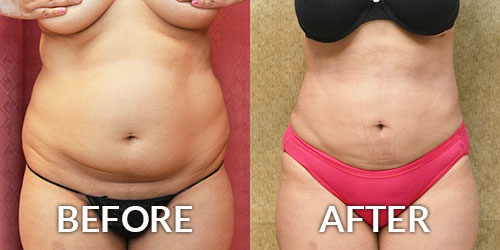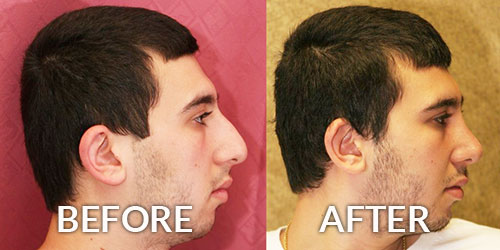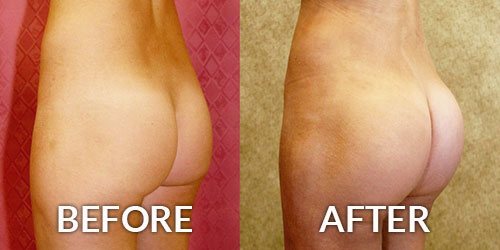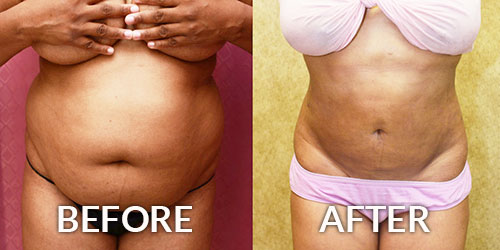Buccal Fat Removal
Consultations offered at our two convenient locations in Beverly Hills and Los Angeles, CA
Buccal fat pad (BFP) removal is a facial contouring procedure that sculpts the cheek area. (1) Removal of the BFP allows patients to achieve a more chiseled, angular contour, accentuating the cheekbones. Buccal fat is naturally occurring adipose tissue that serves as a cushion between the buccinator and the masseter muscles, which control important movement in the lower face. Buccal fat removal can help to slim down “chubby cheeks” many people have in their youth, and that may linger well into adulthood.

Every individual has a unique facial structure. However, not everyone is happy with the shape of their face. Social media and high fashion have had a huge impact on the way we interpret beauty today. And perhaps you have noticed the sculpted facial features of today’s celebrities, models, and influencers, and you’d like to achieve similar facial contours. Or perhaps you simply seek a sleeker shape to achieve a facial profile that better fits your aesthetic goals. With buccal fat removal, patients achieve the slimmer facial silhouette that they desire.
Dr. Sean Younai and his team have helped many women and men to achieve a sleeker, better-defined facial appearance. If you are interested in learning more about buccal fat removal and its suitability for your needs, contact our Beverly Hills or West Hollywood office today by calling (310) 275-1971, or message us using our online contact form.
Contents
About Buccal Fat Removal
The buccal fat pads cushion connecting facial structures in and around the mouth. Located underneath the cheekbones, they sit between the muscles of mastication (chewing) in the lower region of the face. During adolescence, buccal fat volume increases significantly between the ages of 10 and 20 and then decreases in volume until about age 50. (1) And with age, the fat fills in tissue spaces deep within the cheek.
Weight Loss Doesn’t Decrease Buccal Fat
The amount of buccal fat a person has varies and is based on each individual’s genetics. This is why some people experience a “baby face” or “chubby cheeks.” One misconception is that weight loss can lead to a slimmer face. And, in some cases, this is true. However, buccal fat sits deep within the space between the mouth’s inner lining and the skin of the outer cheek. Therefore reducing the amount of fat naturally via exercise, for example, is challenging. Instead, a surgical approach can help to address buccal fat, whether you lose, gain, or maintain weight.
To maintain muscle and tissue functionality, a surgeon should leave a small amount of fat during the procedure. Partial removal of the fat pads can still enable an angular, lean, face. (2) Full, round cheeks are replaced with a slight hollow that slims the lower face, adds natural shadow, and highlights the cheekbones.
Is Buccal Fat Pad Removal a New Procedure?
While the procedure has existed for decades, buccal fat removal has grown in popularity in recent years. Several influential personalities and celebrities are rumored to have undergone the procedure. A star’s pictures on social media provide easy access to images of buccal fat removal examples. And although not everyone can be a supermodel, patients can improve their facial aesthetic with one simple surgery!
What Happens During Buccal Fat Removal Procedure?
A surgeon removes buccal fat via the inner cheek (intraorally). An incision is made on the internal lining of the mouth, with care to avoid major facial nerve branches and glands. The surgeon then teases out buccal fat through this incision. The procedure is repeated on the opposing side, then incisions are closed with dissolvable sutures.
Buccal fat removal results in no scarring. And the small amount of fat removed from the BFP can create a stunning difference. Our meticulous buccal pad removal technique allows for a natural enhancement of facial definition, without looking overdone.
How Can Buccal Fat Removal Benefit Patients?
Benefits of buccal fat removal include the following:
- In-office procedure, local anesthesia
- Can transform a “baby face”
- Sleek, defined facial contours
- More chiseled midface appearance
- Minimal downtime
- Permanent results
- No visible scarring
Candidates for Buccal Fat Removal
Buccal fat removal is a safe, effective procedure, ideal for patients who want to create a better-defined cheek appearance and avoid the “chubby cheeks” look. Good candidates for surgery are people with prominent BFPs who want to “slim down” their appearance, and who are in their early to mid-twenties. The best candidates:
- Do not smoke
- Are at a stable weight
- Are in good health
- Have realistic expectations
You may not be a good candidate for buccal fat removal if:
- You already have a naturally thin face.
- You have a degenerative facial tissue condition. (2)
- Your cheekbones are already well-defined.
If you are an older patient, a buccal fat pad removal procedure is less likely to be successful because buccal fat thins naturally as we age. To determine your eligibility, book a consultation with Dr. Younai.
Personal Consultation
Dr. Younai is a board-certified plastic surgeon who has helped numerous patients to achieve their aesthetic goals through buccal fat removal. At your consultation, we will identify what you want to achieve with your surgery. We will also conduct a brief facial examination to determine if buccal fat removal is the right procedure for you. Additionally, we will review before and after photos to give a realistic idea of what you can expect from your results.
We will be happy to answer questions or concerns during the consultation. If you are interested in setting up a consultation to see if buccal fat removal may be for you, contact us at our Beverly Hills office today at (310) 275-1971, or through our online contact form. Additionally, we invite you to visit our blog to learn more about our surgical and nonsurgical procedures, and how they are helping to improve our patients’ lives.
Preparation
With good preparation, you can ensure that you achieve the best results possible. To prepare for buccal fat removal, you should:
- Avoid smoking (including vaping and marijuana) two weeks before and after surgery.
- Avoid alcohol before surgery to aid your recovery.
- Stop using blood-thinning medications (aspirin, ibuprofen, other NSAIDs)
- Stop using certain vitamins and supplements (especially fish oils, garlic, and vitamin E)
Some plastic surgery procedures require lab testing before the treatment date. Dr. Younai will discuss all aspects of preparation with you at your consultation.
BFP Removal Procedure
Buccal fat removal usually takes around 60 minutes to perform. The procedure is as follows:
- Local anesthesia is injected near the site of the incision.
- An incision is made inside the mouth underneath the saliva duct, on the inner lining of the cheek.
- Dr. Younai will apply pressure to the external cheeks to gently tease out buccal fat through the incision with .
- Once the precise amount of buccal fat has been removed, the incision is closed with dissolvable sutures.
After the procedure is complete, and if you did not receive sedation, you may drive yourself home to begin the recovery process. A trusted person must pick you up from our office if you have taken a sedative.
Recovery
Most patients experience swelling and bruising which should resolve after about one to two weeks. Dr. Younai will prescribe antibiotics and pain medication where indicated. During your recovery, you may experience discomfort with chewing and moving your lower jaw. We recommend icing, and a liquid diet at this time, reintroducing soft foods once healing has advanced.
Results
Results can take two or three months to appear. By this time, the swelling will have subsided, and you will not feel any discomfort. Your body may still continue to heal from treatment. Once the swelling has gone down, you will see the new contour of your cheeks, with more prominent cheekbones and less fullness in the cheeks.
Is Buccal Fat Removal Permanent?
Results from buccal fat pad removal are permanent. However, we recommend maintaining a well-balanced diet with regular exercise as a significant increase in weight may lead to plumping of the cheeks.
Cost of Buccal Fat Removal in Beverly Hills
The cost of buccal fat removal may vary based on your circumstances. We will gladly provide a customized quote at your consultation, and provide additional financing guidance. For your personalized facial contour analysis, and for expert advice from a leading Beverly Hills surgeon get in touch with Dr. Sean Younai. Schedule a personal consultation in Beverly Hills by calling (310) 275-1971. Alternatively, book your appointment by completing an online contact form.
FAQ
What is BFP removal?
“BFP” stands for the buccal fat pad, the small area of fat in the cheek. This can be removed from more prominent cheeks to accentuate the cheekbones and slim the overall facial contour.
What surgery makes the cheeks slimmer?
Many different surgical and non-surgical procedures can add definition to the cheeks, such as dermal fillers, cheek implants, and facial fat grafting. Buccal fat pad removal is one way to achieve a slimmer cheek shape without the use of implants.
Do I have to change my diet after buccal fat pad removal?
It may be necessary to avoid foods that require a lot of chewing (e.g. steak). Instead, in the first few days, patients should liquefy their food (soups are ideal). After several days of healing, patients may graduate to solid, but soft, foods (e.g. mashed potato).
References
- Davis B, Serra M. Buccal Fat Pad Reduction. [Updated 2022 Nov 21]. In: StatPearls [Internet]. Treasure Island (FL): StatPearls Publishing; 2022 Jan-. Available from: https://www.ncbi.nlm.nih.gov/books/NBK576413/
- Moura LB, Spin JR, Spin-Neto R, Pereira-Filho VA. Buccal fat pad removal to improve facial aesthetics: an established technique? Med Oral Patol Oral Cir Bucal. 2018 Jul 1;23(4):e478-e484. doi: 10.4317/medoral.22449




